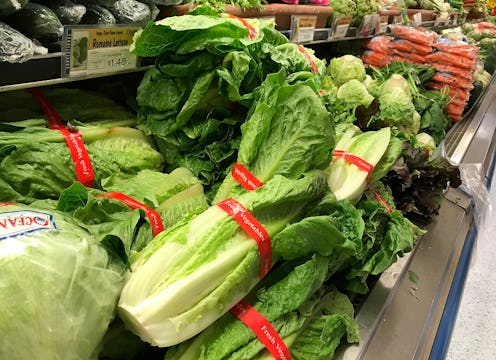Life
The CDC Says It’s Safe To Eat Some Romaine Again

Following a recent outbreak of E. coli infections, a nationwide warning was issued against consuming romaine lettuce linked to these infections. Now, the CDC has issued a statement saying that some romaine lettuce is safe to eat again, provided that the label says the produce does not come from California.
Romaine lettuce was recently recalled on a massive scale, due to a multistate E. coli outbreak. The FDA reports that E. coli infections linked to eating romaine lettuce have sickened 43 people in 12 states, and are still being investigated by U.S. public health officials. PBS Newshour states that 22 people were also sickened in Canada, though no deaths have been reported.
“As we continue to investigate this outbreak, today the FDA is announcing new steps to help consumers better identify where their romaine is grown through voluntary labeling,” the FDA says in its press release. The recent outbreak led officials to advise the public not to eat any romaine lettuce, and to “destroy any romaine lettuce in their homes.” The FDA also asked that all romaine lettuce in restaurants and other commercial establishments be “withdrawn and destroyed.” The FDA previously issued the sweeping, nationwide warning because a source of the outbreak hadn’t been identified yet, and total market recall was the quickest way to prevent additional illnesses.
The FDA and CDC have now partially lifted the warning about eating romaine lettuce, PBS Newshour reports, because a source of the outbreak was identified over the Thanksgiving holiday. The FDA says the contaminated romaine comes from the Central Coast region of California, based on the results of its investigation. Romaine lettuce grown in Arizona, Florida, Mexico, and California’s Imperial Valley is safe to eat, according to the FDA. Romaine from these places wasn’t being shipped yet when the outbreak started, The Guardian notes.
The FDA states in the press release that it was crucial to make a “clean break” in terms of the romaine lettuce supply in the U.S. in order to get the tainted greens off the market as quickly and efficiently as possible. “Knowing the growing origin of produce will continue to play an important role in allowing consumers to avoid contaminated products and facilitating market withdrawals and tracebacks,” the FDA says. “That’s why we previously called on the romaine lettuce industry to provide unambiguous and clear information to consumers regarding where their lettuce was grown and when it was harvested.”
The produce industry has cooperated with the FDA in making sure to label products with harvest dates and growing region information, says PBS Newshour. The FDA has further requested that retailers post this information at the cash register for unpackaged, unlabeled romaine products. “The labeling will identify the origin of the romaine based on harvest region, along with the date of harvest. This can improve the ability of the FDA to provide more targeted information to consumers in the event of a future outbreak of illness. The FDA also has commitments from the romaine lettuce industry that such labeling will continue into the future and become the standard for their products,” The FDA states.
The FDA advises consumers that if you can’t identify the growing region and source of any romaine lettuce products, don’t buy or eat them. If you’ve purchased any romaine lettuce that aren’t clearly labeled, you can return them to the original place of purchase for a full refund. When in doubt, pass on the romaine.